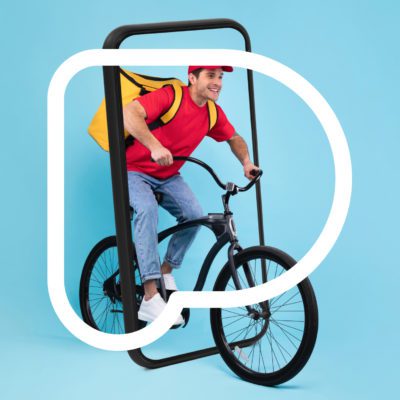As customer habits and restaurant operations have both made dramatic shifts this past year, delivery has been at the center of the conversation, with third-party delivery services not far behind. They’ve allowed restaurants to continue to reach large audiences, but they’ve also cut into sales with their steep commission fees. With customers still leaning heavily on delivery, is there a way to take advantage of the benefits third-party apps offer while still remaining profitable?
The Third-Party Presence

First, let’s take a look at how widely third-party apps are currently used. An Uber Eats-commissioned study revealed that 92% of restaurants surveyed said they’ve used a delivery app since the pandemic began. Driving this growth on the restaurant side is the exposure that a third-party app brings, which is crucial when foot traffic or indoor dining has significantly slowed. Out of the third-party apps used, “The Big Four” including UberEats, Postmates, Grubhub and Doordash, make up an estimated 95% of the market.
What Restaurants Are Saying

Before the pandemic, delivery apps offered a nice incremental revenue for restaurants with little negative effect. But now that delivery has assumed such an important role, the pros and cons of delivery apps have only been magnified.
The glaring downside is that most charge restaurants a commission fee of 15% to 30% per order. As a restaurant owner in Maryland, Chef Ashish Alfred told Marketplace, “It’s a huge, huge chunk of our money. Especially because people are just, for the most part, using this money to pay their staff.” For that reason, Fida and Robert Ghanem, who have operated restaurants in Durham, North Carolina for 33 years told Business Insider that they’ve decided not to use third-party apps because they “needed to keep as many employees working as possible.”
The good news is that even if restaurants do give up a percentage of sales, the UberEats study reveals that checks for delivery are higher than ever, going up 69% since March. Combined with the visibility they offer, Anca Caliman, co-owner of Lemon Poppy Kitchen locations in LA, told the Los Angeles Times, she sees them as necessary right now, if not ideal.
Making Delivery Work For You

If you use a third-party, look at how you can help bolster the sales you get back. Small orders will almost certainly lose you money, so require a minimum amount to ensure each order is still profitable. You might also consider limiting your menu on third-party services to larger profit-margin dishes to make it worth your while. Or, think about creating bundles or family meals that may entice your customers to order more at once.
Of course, the best way to ensure you don’t lose out to third-parties is to market the benefits of ordering directly from your restaurant effectively. As online ordering and delivery keep growing, customers may become more used to ordering direct, and third-party apps could lose their hold. Promote the benefits of direct ordering to your customers via email and on social media, being sure to explain why ordering direct saves them money and lets them support local businesses they love. That’s a win-win all around.




